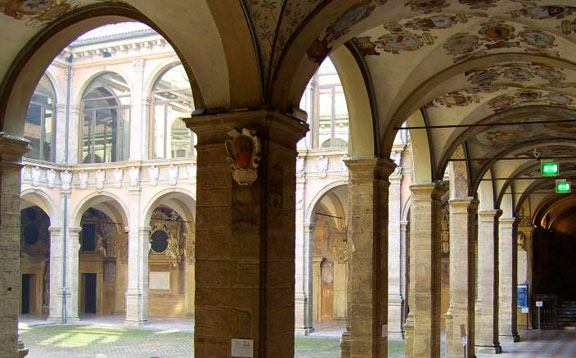 Speaking about universities, we have to start from what is considered to be the first university in the Western world and surely one of the firsts in the world, that of Bologna, founded in 1033. Even today this city is famous worldwide for its coolness and cultural life, for the vitality of youth and entertainment opportunities.
Speaking about universities, we have to start from what is considered to be the first university in the Western world and surely one of the firsts in the world, that of Bologna, founded in 1033. Even today this city is famous worldwide for its coolness and cultural life, for the vitality of youth and entertainment opportunities.
Its origins date back with lifes of great personalities who studied here science and literature. Dante, Petrarch, Guido Cavalcanti, Guido Guinizelli, Thomas Becket are just some of the students passed in Bologna.
At the end of the eleventh century masters of grammar, rhetoric and logic started to teach regularly. Then in the fourteenth century spreaded schools of jurism, medicine and philosophy, arithmetic, astronomy and theology. Quickly Bologna became a destination for famous guests as Raimundo de Pegñafort, Albrecht Dürer, St. Carlo Borromeo, Torquato Tasso, Carlo Goldoni, Pico della Mirandola, Leon Battista Alberti and Nicolaus Copernicus. No to speak about Luigi Galvani, Alessandro Volta, Benjamin Franklin, Henry Cavendish, Giosuè Carducci, Giovanni Pascoli, to remain in the modern age.
In Bologna you will find students from all over Italy and many Erasmus students, Spanish and Americans. The city centre mantains its ancient circular structure so that every site can be easily reached by bycicle or foot. Public transports are quite good and not too expensive, but the best thing to do in Bologna is walking freely under the lodges, discovering hidden streets that lead to the past.
That’s it, this city reveals four millennia of history. Situated on Roman Via Emilia and bordered by the rivers Rhine and Savena, Bologna is one of the oldest cities in Italy. It all starts with the prehistoric Villanova dating between 1.000-900 AC. After the initial period the city passes to the Etruscans with the name of Felsina and starts to built is own culture. Then it is conquered by the Gauls, who make it their capital under the name of Bononia.
But the city really develops in Roman imperial era and that’s why Marcus Valerius Martial calls it a cult. After Romans and Municipalities age, Bologna knows in 1513 the Papal State until it is annexed in the kingdom of Italy in 1859.
Many are the things that reveal city centre is made, partially, for the students. Via Zamboni is the main zone with many faculties. Piazza Maggiore is the central square with one of Italy’s biggest library, Biblioteca Sala Borsa.
The most important monuments are the towers called 2 Torri, Garisendi and Asinelli, stuated at the end of Via Rizzoli and just at the beginning of Via Zamboni. Every square takes its name from the churches. San Francesco, Santo Stefano, San Domenico, San Petronio, the Loggia dei Mercanti, these are the most famous locations where students, citizens and tourists meet to relax open-air in wonderful scenarios.
Piazza Maggiore is the vital centre of the city whose design originated in the thirteenth century and underwent further. In the square are the main monuments as the San Petronio Cathedral an example of Italian Gothic, with The central portal is adorned sculptures by Jacopo della Quercia, Palazzo del Podestà and Palazzo Bevilacqua, Neptune fountain and the Palazzo Re Enzo (King Enzo’s Palace).
Then it is not to miss the Complex of Santo Stefano, made of seven different buildings. It ‘s a compact group of ancient sacred structures, started after the martyr Stephen, probably built on the Roman temple dedicated to Isis.
Image Flickr creative comons license courtesy by Greenblackberries
